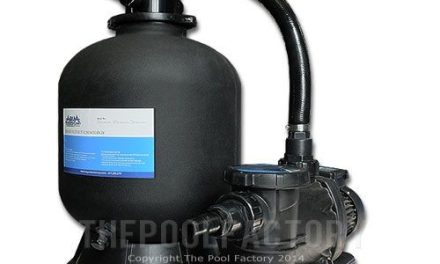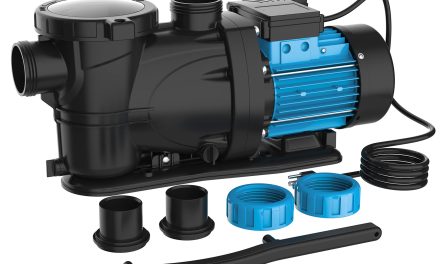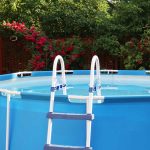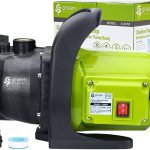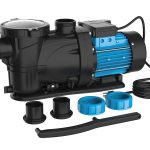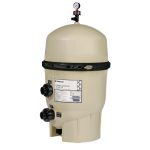To install a fiberglass pool, begin by excavating the site and compacting the sub-base. Next, establish the level of the pool and install screed rods.
Then, set the pool in the hole and install fittings. Finally, backfill the pool and complete any necessary finishing touches. It is important to note that while it is possible to install a fiberglass pool yourself, it is recommended to have basic excavation and plumbing experience, as well as ample time for the project.
Backfilling with gravel is a popular choice due to its stability and resistance to shifting. Additionally, concrete is needed to connect the pool to the fiberglass shell for structural purposes. It is advised to hire a professional if the pool needs to be drained.
Step 1: Excavating The Site
To install a fiberglass pool, the first step is to excavate the site. This involves preparing the area by determining the proper dimensions and depth for the pool. It is important to carefully follow these guidelines to ensure a successful installation.
Avoid commonly overused words and phrases, keep sentences brief, and use a variety of expressions to maintain reader interest. Installing a fiberglass pool may seem simple, but it requires basic excavation and plumbing experience, as well as time. Gravel is a popular choice for backfilling fiberglass pools due to its stability.
Concrete is also needed to connect the pool to the ground for structural reasons. A bottom drain is not necessary for a fiberglass pool, and draining is not needed for dirty water or certain circumstances. Installing a fiberglass pool requires careful planning and proper execution to create a beautiful and functional swimming area.
Step 2: Compacting The Sub-Base
To ensure a stable foundation for your fiberglass pool, it is essential to use suitable equipment for proper compaction. By following these guidelines, you can avoid starting with commonly overused words and phrases. Keep your sentences brief, with a maximum of 20 words each, to make your content easy to read.
Use a variety of phrases at the beginning of paragraphs to maintain reader interest. When installing a fiberglass pool, compaction of the sub-base is a crucial step. Choose the right equipment and compact the sub-base thoroughly to create a solid foundation for your pool.
This will help ensure the longevity and stability of your fiberglass pool.
Step 3: Establishing The Level Of The Pool
To ensure a balanced pool installation, it is crucial to check and adjust the level of the excavated site. This step is essential for proper alignment. By carefully following these guidelines, you can avoid starting sentences with commonly overused phrases and maintain brief, 20-word sentences.
Using a variety of phrases at the beginning of paragraphs will keep readers engaged. Installing a fiberglass pool may seem simple at first, but it requires basic excavation and plumbing experience. Gravel is a popular choice for backfilling fiberglass pools due to its stability and resistance to water retention.
Concrete is necessary for structural reasons and must be bonded to the shell with rebar. Draining the pool is not required for regular maintenance or moving to a new location.
Step 4: Installing Fittings And Accessories
When it comes to installing fittings and accessories for your fiberglass pool, it is important to attach the necessary fittings such as a skimmer, drain, and return jets. Additionally, installing accessories like steps and handrails can enhance the overall functionality and aesthetics of your pool.
In this blog post, we will guide you through the step-by-step process of installing these fittings and accessories to ensure a successful installation. By following these guidelines, you can ensure that your fiberglass pool is equipped with all the necessary components for optimal performance.
Moreover, a properly installed fiberglass pool will provide you with years of enjoyment and relaxation.
Step 5: Setting The Pool In The Hole
When setting the fiberglass pool in the hole, it is crucial to utilize proper techniques to ensure smooth installation. First and foremost, make sure to carefully move the pool into the excavation, avoiding any jerking or sudden movements. Additionally, ensure proper alignment and level by using a level and adjusting as necessary.
This step is critical to the stability and overall function of the pool. By following these guidelines, you can successfully set the pool in the hole and proceed with the installation process. Remember to take your time and be cautious to prevent any damage to the pool or surrounding area.
Step 6: Backfilling
When backfilling, it is important to gradually add and compact the fill material to ensure there are no voids. This will provide stability for the fiberglass pool. Avoiding voids is crucial to prevent any potential shifting or settling of the pool.
So, take your time and carefully add the backfill material, making sure to compact it as you go. This will help create a solid and stable base for your fiberglass pool. By following these guidelines, you can ensure a successful installation process for your new pool.
Step 7: Grouting The Coping
To achieve a clean and finished look for your fiberglass pool, it is important to properly grout the coping stones around the pool edge. Applying grout or sealant will secure the stones in place, ensuring their stability and preventing any movement.
This step is essential for both the aesthetic appeal of the pool area and the longevity of the coping stones. By carefully following this guideline, you will create a seamless and professional finish that will enhance the overall appearance of your fiberglass pool installation.
Step 8: Finishing Touches And Clean-Up
After completing the installation process of your fiberglass pool, it’s time for the finishing touches and clean-up. The first step is to clean the installation site thoroughly, removing any debris or dirt. This will ensure a clean and smooth surface for your pool.
Next, check for any necessary adjustments or touch-ups that may be needed. It’s important to make sure everything is in place and secure before moving forward. Taking the time to do a final inspection will ensure the best possible outcome for your fiberglass pool installation.
Once everything is clean and adjusted, you can proceed with the next steps in enjoying your new pool.
Step 9: Maintenance And Care Tips
To ensure the longevity and proper functioning of your fiberglass pool, it is essential to follow some maintenance and care tips. Regularly clean the pool using a pool brush and vacuum to remove debris and dirt. Keep the water balanced by regularly testing and adjusting the pH and chlorine levels.
Regularly check and clean the pool filters to ensure proper filtration. Inspect the pool for any cracks or damages and repair them promptly. Keep the pool covered when not in use to prevent the accumulation of debris. Regularly remove leaves and debris from the pool surface.
By following these tips, you can ensure that your fiberglass pool stays in optimal condition for years to come.

Credit: instaswimusa.com
Frequently Asked Questions For How To Install Fiberglass Pool
Can You Install A Fiberglass Pool Yourself?
Yes, you can install a fiberglass pool yourself if you have basic excavation and plumbing experience, along with time.
What Is The Best Base For A Fiberglass Pool?
The best base for a fiberglass pool is gravel, as it provides stability and does not shift like dirt.
Do You Need Concrete Around A Fiberglass Pool?
Concrete is needed around a fiberglass pool for structural reasons. It can be covered by pavers or stones but must connect to the pool and extend to virgin soil.
Does A Fiberglass Pool Need A Bottom Drain?
No, a fiberglass pool does not need a bottom drain.
Can I Install A Fiberglass Pool Myself?
Yes, you can install a fiberglass pool yourself if you have basic excavation and plumbing experience.
Conclusion
To successfully install a fiberglass pool, it is crucial to adhere to the key steps in the installation process. Site preparation is the first step, involving excavation and laying the groundwork for the pool. Once the area is ready, the pool can be set into the hole, ensuring it is level and properly aligned.
Fittings should then be installed, and the pool should be backfilled with gravel, providing stability and preventing shifts over time. When it comes to the surrounding area, concrete is essential for structural purposes, and it must be connected to the fiberglass pool and extend to the virgin soil.
Throughout the installation process, it is important to ensure professional support and guidance, particularly when it comes to draining the pool. By carefully following these steps and seeking professional assistance, you can successfully install a fiberglass pool and create a beautiful and functional addition to your outdoor space.






